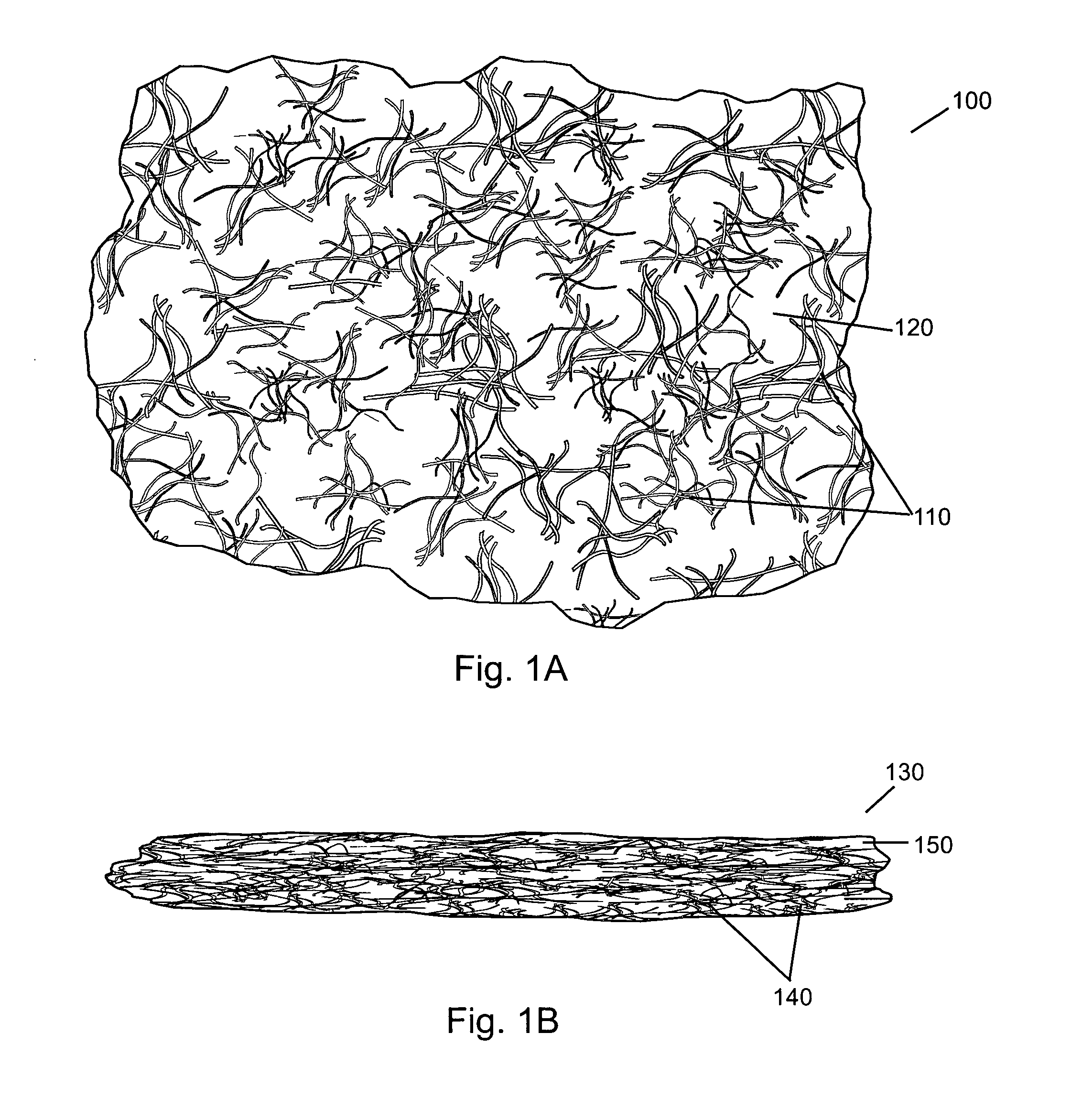Compressed high density fibrous polymers suitable for implant
a high density, fibrous polymer technology, applied in the direction of prosthesis, costomy device, drug composition, etc., can solve the problems of no single prosthetic material having universal acceptance, no single prosthetic material has gained universal acceptance, and lack of inertness to infection, so as to minimize the possibility of immunological response
- Summary
- Abstract
- Description
- Claims
- Application Information
AI Technical Summary
Benefits of technology
Problems solved by technology
Method used
Image
Examples
example 1
[0109] Starting with a dough-like material (90:10 ratio of fibrous collagen (Semed F, supplied by Kensey Nash Corporation) to soluble collagen (Semed S, supplied by Kensey Nash Corporation)) (approximately 20% solids), the composition was rolled into a flat sheet approximately 5 mm thick. This was then sandwiched between two sheets of wicking material, such as a paper towel. This entire arrangement was placed in a 30 ton hydraulic press at 60,000 lbf. The product was left until equilibrium was achieved and no additional water was being expelled from the product at the given pressure. The press was opened and the product was removed as an approximately 1 mm sheet. An expansion of approximately 30-40% was noted in a radial direction. The sheet was cross-linked using 50 mM EDC (pH 5.4) in water. The sheet was soaked overnight in the solution and then serially rinsed 3×for 2 hours with agitation in water. Tear strengths in excess of 120 N were achieved.
example 2
[0110] Starting with a fibrous dough-like material (90:10 ratio of fibrous collagen (Semed F, supplied by Kensey Nash Corporation) to soluble collagen (Semed S, supplied by Kensey Nash Corporation)) (approximately 20% solids), the composition was rolled into a flat sheet approximately 5 mm thick. This was then sandwiched between two sheets of wicking material, such as a paper towel. The product was then wrung through a set of high compression rollers allowing the wicking material to remove a large portion of the available water. It was noted the material expanded in both the lengthwise and widthwise directions unless constrained in one direction. The sheet was then freeze dried to preserve the small amount of porosity that was still remaining within the sample.
example 3
[0111] Starting with a fibrous dough-like material (85:15 ratio of fibrous collagen (Semed F, supplied by Kensey Nash Corporation) to soluble collagen (Semed S, supplied by Kensey Nash Corporation)) (approximately 12% solids), the composition was spread into a flat sheet approximately 3 mm thick. This was then sandwiched between two sheets of wicking material, such as a paper towel. The entire composition was then placed in a 30 ton hydraulic press and subjected to 60,000 lbf for 15 minutes. The sheet was removed and a thickness of approximately 0.2 mm was noted. Additionally, the material had expanded radially 200-300%. The material was crosslinked using 50 mM EDC (pH 5.4) in water. The sheet was soaked overnight in the solution and then serially rinsed 3×for 2 hours with agitation in water. This was then allowed to air dry.
PUM
| Property | Measurement | Unit |
|---|---|---|
| Force | aaaaa | aaaaa |
| Flow rate | aaaaa | aaaaa |
| Structure | aaaaa | aaaaa |
Abstract
Description
Claims
Application Information
 Login to View More
Login to View More - R&D
- Intellectual Property
- Life Sciences
- Materials
- Tech Scout
- Unparalleled Data Quality
- Higher Quality Content
- 60% Fewer Hallucinations
Browse by: Latest US Patents, China's latest patents, Technical Efficacy Thesaurus, Application Domain, Technology Topic, Popular Technical Reports.
© 2025 PatSnap. All rights reserved.Legal|Privacy policy|Modern Slavery Act Transparency Statement|Sitemap|About US| Contact US: help@patsnap.com



